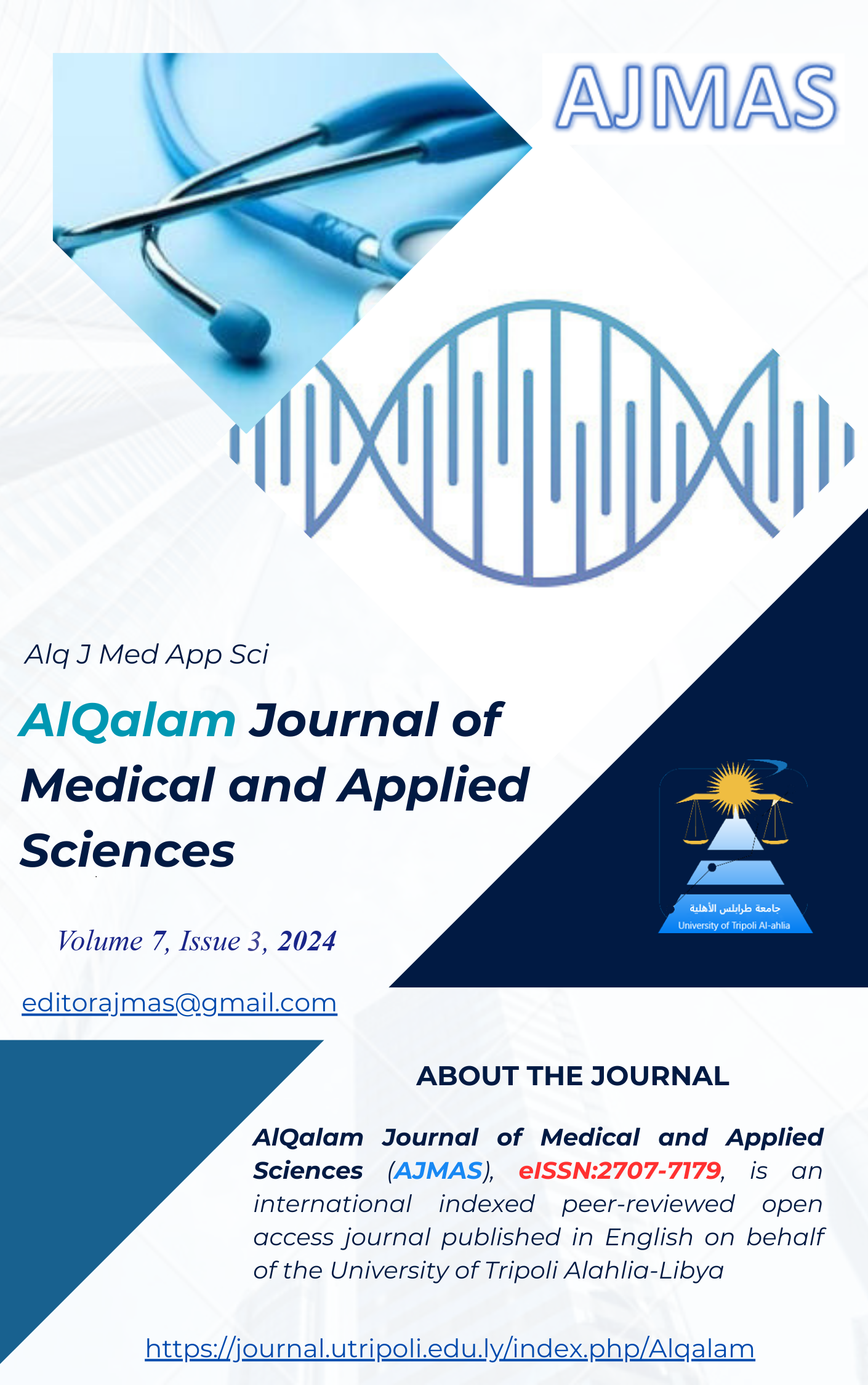Comparative Analysis of Imidazole and Urtica dioica Emulsions in the Management of Dermatophytic Infections
DOI:
https://doi.org/10.54361/ajmas.247305Abstract
This study explores the epidemiological distribution and antifungal efficacy of treatments against common dermatophytic infections, which predominantly include species from the genera Trichophyton, Microsporum, and Epidermophyton. These infections are significant due to their prevalence and the challenge posed by recurrence and resistance. Between January and September 2022, 35 fungal samples were collected from a dermatological clinic and analyzed using various growth media. Our research focused on evaluating the antifungal effectiveness of a synthetic imidazole emulsion (CSI), an antibiotic, and a natural emulsion from Urtica dioica (CSP). Results revealed that CSI and antibiotic treatments were significantly more effective across all tested species compared to CSP, with CSI often showing superior or comparable efficacy to antibiotics. The findings underscore the robust antifungal properties of imidazole derivatives and suggest a potential limitation in the therapeutic utility of U. dioica extracts. The study highlights the need for continued exploration of innovative treatments and the development of effective management strategies for fungal infections, considering the variance in species prevalence and treatment response.
تستكشف هذه الدراسة التوزيع الوبائي والفعالية المضادة للفطريات للعلاجات ضد العدوى الجلدية الفطرية الشائعة، والتي تشمل بشكل أساسي الأنواع من أجناس Trichophyton وMicrosporum وEpidermophyton هذه العدوى مهمة بسبب انتشارها والتحدي الذي يفرضه تكرار الإصابة والمقاومة. بين يناير وسبتمبر 2022، تم جمع 35 عينة فطرية من عيادة جلدية وتحليلها باستخدام وسائط نمو مختلفة. ركز بحثنا على تقييم الفعالية المضادة للفطريات لمستحلب إيميدازول صناعي (CSI) ومضاد حيوي ومستحلب طبيعي من نبات القراص (CSP). وكشفت النتائج أن علاجات مستحلب إيميدازول الصناعي والمضادات الحيوية كانت أكثر فعالية بشكل ملحوظ في جميع الأنواع التي تم اختبارها مقارنة بمستحلب القراص الطبيعي، حيث أظهر مستحلب إيميدازول الصناعي غالبًا فعالية متفوقة أو مماثلة للمضادات الحيوية. وتؤكد النتائج على الخصائص المضادة للفطريات القوية لمشتقات الإيميدازول وتشير إلى وجود قيود محتملة في الفائدة العلاجية لمستخلصات نبات القراص. وتسلط الدراسة الضوء على الحاجة إلى مواصلة استكشاف العلاجات المبتكرة وتطوير استراتيجيات إدارة فعالة للعدوى الفطرية، مع مراعاة التباين في انتشار الأنواع واستجابة العلاج
Downloads
Published
How to Cite
Issue
Section
License
Copyright (c) 2024 Salahaldin Alfurjany, Shamsi Shamsi, Basma Alnaas, Selema Ibrahim, Abdelkader Elzen

This work is licensed under a Creative Commons Attribution 4.0 International License.















